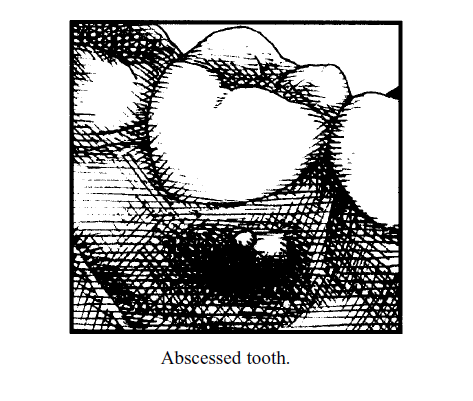Gum Abscess
A gum abscess can be another sign of gum disease. If an area of your mouth appears to have a swelling or a lump above the tooth, then you may well have a gum abscess. The invasive bacteria within the abscess will eat away at the supportive bone. The onset of gum disease can begin with just one abscess on one tooth. Bacteria will eat away at the bone surrounding the tooth, resulting in less support to the tooth and ultimately in tooth loss if not properly cared for.
An abscess does not necessarily have pain associated with it, but you may have an additional problem originating in the nerve, which will cause pain. Gum disease is insidious and can progress without your knowledge. Any early signs of this disease, as described above, need your immediate attention. If you lose bone, which roots your teeth into their sockets, your teeth will lack support and will loosen or fall out.
Bone, ligaments, and gum tissue all support the positioning of the teeth. But diseased conditions of our body can be reversed as long as we do not deny that they exist.
The History of Gum Disease
Luckily, many dentists have been true pioneers in the prevention of tooth loss and have helped create the techniques and instruments for scaling teeth that are used today.
Knowledge of gum disease dates back as far as 1746, when Dr. Pierre Fauchard, a surgeon-dentist who is known as the father of modern dentistry, wrote a paper titled Le Chirurgien Dentiste that described gum disease. Dr. Fauchard advised patients to wash out their mouths with tepid water after having cleaned their teeth. After they rinsed, he advised patients to rub the teeth from below Gum Disease upward, and from above downward—outside and inside— with a little sponge dipped in water. He also claimed it was good to use a half-round toothpick to remove what he called the “fur” that collects on or between the teeth and gums during the night. His advice to remove this sticky film with a toothpick was very advanced for his time, and his ideas presaged oday’s use of picks to scale teeth.

